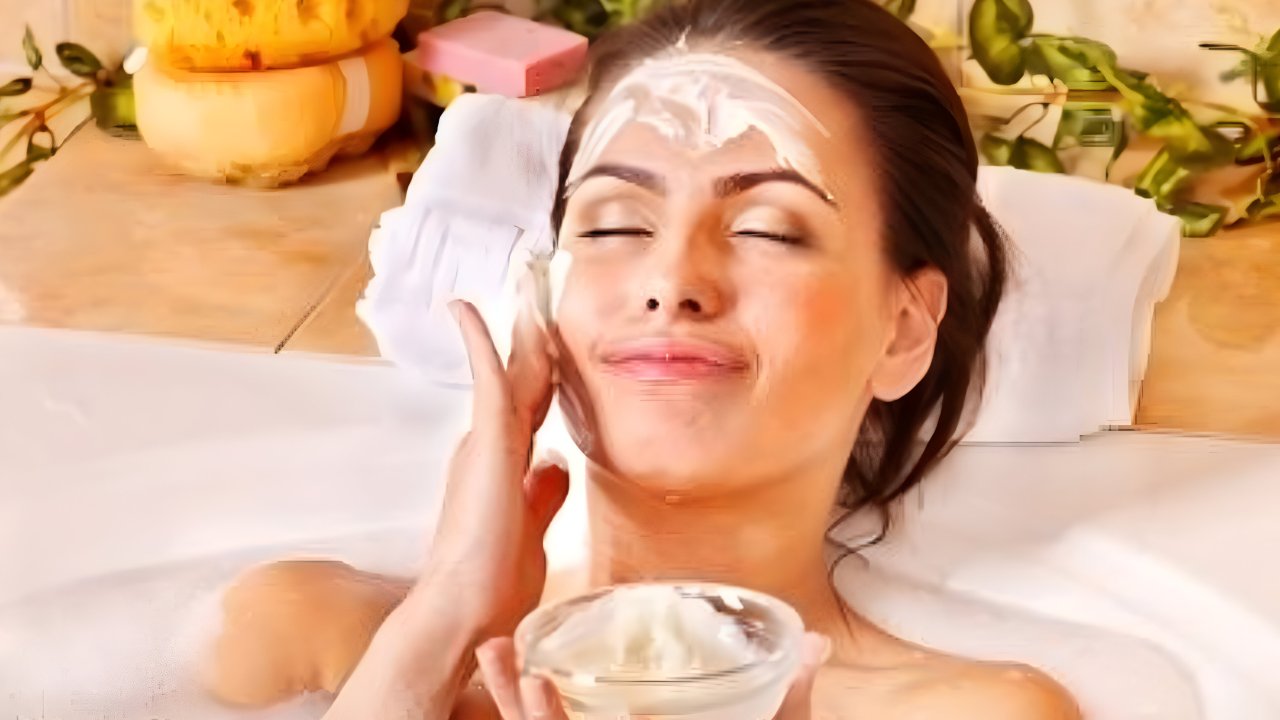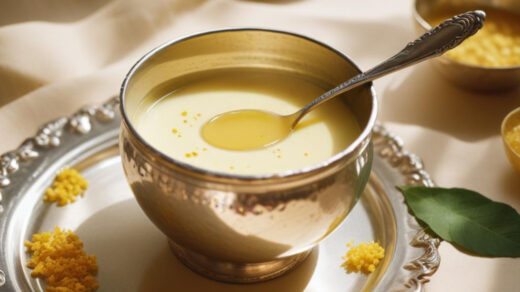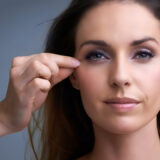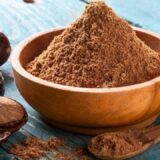Ayurvedic Beauty Tips For Acne, Dry Skin, Moles & Freckles
by Ayurvedic India 04/10/2024
In today’s world, beauty is more than skin deep; it reflects our overall health and well-being. Ayurveda, the ancient Indian system of medicine, offers a holistic approach to skincare that emphasizes the interconnectedness of body, mind, and spirit. 
Rather than merely addressing superficial symptoms, Ayurveda focuses on achieving balance within the body by harmonizing the three doshas—Vata, Pitta, and Kapha. If you’re dealing with concerns like acne, dry skin, moles, or freckles, Ayurveda provides natural, effective solutions tailored to your unique constitution.
This time-tested practice emphasizes treating the root causes of skin issues through personalized treatments and the use of natural herbs and ingredients. By nourishing and healing the skin from within, Ayurvedic beauty solutions promote not only a radiant complexion but also overall vitality and wellness.
Embrace the wisdom of Ayurveda to unlock your skin’s natural beauty and achieve lasting results that reflect your inner harmony.
Understanding Your Skin Through Ayurveda
Ayurvedic skincare is deeply rooted in the understanding of the individual constitution, or dosha, which plays a significant role in determining your skin type and its needs.
By recognizing how the three doshas—Vata, Pitta, and Kapha—manifest in your skin, you can better tailor your skincare regimen to promote balance and health.
Ayurvedic Skin Types
1. Vata Skin: Characterized by its dry, thin, and delicate texture, Vata skin is often prone to wrinkles, flakiness, and a lack of moisture.
This skin type may feel rough and can become easily dehydrated, especially in dry or windy climates. Vata individuals benefit from nourishing and hydrating products that enhance moisture retention.
2. Pitta Skin: Typically sensitive and warm, Pitta skin is more prone to conditions such as acne, redness, and irritation.
Those with Pitta skin may notice frequent breakouts or skin rashes, especially during hot weather or after consuming spicy foods. To soothe this skin type, cooling, and calming ingredients are essential, helping to reduce inflammation and balance heat.
3. Kapha Skin: Known for its oily and thick texture, Kapha skin tends to be prone to clogged pores, pimples, and a dull complexion.
This skin type often benefits from regular cleansing and exfoliation to manage excess oil and prevent breakouts. Kapha individuals should focus on lighter, balancing products that help clear impurities without stripping essential moisture.
How Doshas Imbalance Affects Your Skin
When the doshas become imbalanced—triggered by factors such as stress, diet, lifestyle choices, or environmental conditions—various skin issues can emerge. Each dosha’s excess manifests uniquely in the skin:
1. Excess Vata: When Vata is out of balance, skin can become excessively dry, flaky, and irritated. This may lead to premature aging, fine lines, and an overall lack of moisture. Individuals may notice rough patches or increased sensitivity to environmental elements, making hydration and nourishment crucial.
2. Excess Pitta: An imbalance in Pitta often results in inflammation and heat-related issues, such as acne, rashes, or rosacea. This skin type may experience increased redness, sensitivity, and a tendency to break out, particularly during hot weather or after consuming spicy foods. Cooling and soothing treatments are essential to mitigate these symptoms.
3. Excess Kapha: When Kapha is excessive, the skin may become overly oily and thick, leading to clogged pores, blackheads, and a dull complexion. This skin type often struggles with conditions like cystic acne and general congestion. Regular cleansing and exfoliation are vital to managing oil production and maintaining a clear, healthy appearance.
Restoring Balance Through Ayurveda
Ayurveda offers a holistic approach to restoring balance by addressing both the physical and emotional aspects of skin health. This involves:
- Natural Remedies: Utilizing herbal treatments tailored to your dosha can help correct imbalances. Ingredients like neem, turmeric, and aloe vera can soothe and heal the skin.
- Dietary Adjustments: Emphasizing foods that pacify your predominant dosha can significantly impact your skin’s health. For example, incorporating cooling foods for Pitta, hydrating foods for Vata, and light, detoxifying options for Kapha can help restore harmony.
- Lifestyle Changes: Mindfulness practices such as yoga, meditation, and regular exercise promote overall well-being and can reduce stress levels, which are often contributors to skin imbalances.
By addressing the root causes of skin concerns through these comprehensive strategies, Ayurveda not only fosters healthier skin but also enhances your overall quality of life.
Embracing these principles allows you to cultivate balance and harmony within your body, leading to radiant, glowing skin.
Balancing Doshas for Glowing Skin
In Ayurveda, the balance of the three doshas—Pitta, Vata, and Kapha—plays a vital role in determining skin health and appearance. Each dosha has unique qualities that influence the skin, and understanding these connections can help you maintain a radiant complexion.
1. Pitta Dosha and Skin Issues
Pitta dosha is associated with heat, metabolism, and transformation. When in balance, Pitta contributes to a warm, glowing complexion. However, when aggravated, it can lead to various skin issues, including:
- Acne: Increased heat and inflammation can result in breakouts and irritation.
- Rashes: Skin can become sensitive and reactive, leading to redness and rashes.
- Rosacea: Pitta imbalance can manifest as persistent facial redness and inflammation.
Balancing Tips: To pacify Pitta, incorporate cooling foods such as cucumbers, melons, and leafy greens into your diet. Avoid spicy foods and excessive heat exposure, and consider using soothing herbs like aloe vera and sandalwood in your skincare routine.
2. Vata Dosha and Dryness
Vata dosha embodies the qualities of dryness, lightness, and coolness. When Vata is imbalanced, it can lead to dry, rough, and flaky skin. Individuals with Vata imbalances may also experience:
- Premature Aging: Increased dryness can contribute to fine lines and wrinkles.
- Sensitivity: Dry skin may become more susceptible to irritation and redness.
Balancing Tips: To nurture Vata, focus on hydrating foods like avocados, nuts, and warm soups. Incorporate moisturizing oils like sesame or almond oil into your skincare routine, and prioritize gentle, hydrating products. Regularly practice grounding activities like yoga or meditation to help stabilize Vata’s energy.
3. Kapha Dosha and Oily Skin
Kapha dosha is characterized by qualities of heaviness, moisture, and stability. When Kapha is imbalanced, it can lead to oily skin and clogged pores, resulting in issues such as:
- Acne and Pimples: Excess oil production can cause breakouts, particularly in the T-zone.
- Dullness: Thick, oily skin may appear congested and lack vibrancy.
Balancing Tips: To balance Kapha, incorporate light, warm, and stimulating foods such as spices, lentils, and seasonal fruits. Avoid heavy, greasy foods, and focus on regular exfoliation and cleansing in your skincare routine. Engaging in invigorating physical activities can also help balance Kapha’s energy.
Ayurvedic Beauty Tips for Acne
Acne is a common skin condition that can be distressing, but Ayurveda offers a holistic approach to managing and treating it. By understanding the root causes of acne and utilizing natural remedies, you can achieve clearer skin and restore balance.
Causes of Acne According to Ayurveda
In Ayurveda, acne is often linked to imbalances in the Pitta and Kapha doshas. Pitta imbalances can lead to increased heat and inflammation in the body, manifesting as red, inflamed acne.
Kapha imbalances, characterized by excess oil and sluggishness, can cause clogged pores and pimples. Factors such as poor diet, stress, hormonal changes, and environmental elements can exacerbate these imbalances, leading to breakouts.
Natural Remedies for Acne-Prone Skin
1. Neem for Acne
Neem is renowned for its antibacterial and antifungal properties, making it an excellent remedy for acne. Its ability to purify the blood and detoxify the skin helps reduce inflammation and prevent future breakouts.
You can use neem leaves to create a paste by grinding fresh leaves with water or opt for neem oil, which can be applied directly to affected areas. Regular use can lead to clearer, healthier skin.
2. Turmeric’s Anti-Inflammatory Properties
Turmeric is a powerful anti-inflammatory and antioxidant agent that can effectively combat acne. Curcumin, the active compound in turmeric, helps reduce redness and swelling while promoting healing.
Mix turmeric powder with honey or yogurt to form a paste, and apply it to the affected areas for about 15-20 minutes before rinsing. This natural remedy not only helps reduce acne but also brightens the skin.
3. Tulsi as a Skin Purifier
Tulsi, or holy basil, is considered a sacred herb in Ayurveda and is highly regarded for its purifying properties. It helps detoxify the skin, reduces inflammation, and fights bacteria.
You can prepare a tulsi paste by grinding fresh leaves and applying it to acne-prone areas. Additionally, drinking tulsi tea can help cleanse the body from within, promoting overall skin health.
Ayurvedic Beauty Tips for Dry Skin
Dry skin can be a frustrating condition, often leading to discomfort and a lackluster appearance. Ayurveda offers valuable insights into the causes of dry skin and effective natural remedies to restore moisture and balance.
Why Dry Skin Happens in Ayurveda
According to Ayurveda, dry skin is primarily associated with an imbalance in the Vata dosha, which embodies qualities of dryness, coolness, and lightness.
Factors such as environmental conditions (cold weather, low humidity), poor diet (lack of healthy fats), and lifestyle choices (stress and inadequate hydration) can aggravate Vata, leading to skin that feels rough, flaky, and tight.
Understanding this connection allows for targeted treatments that address the root cause of dryness.
Hydrating the Skin with Natural Oils
1. Almond Oil for Dry Skin
Almond oil is a deeply nourishing oil rich in vitamins A and E, which promote skin health and hydration. Its emollient properties help to lock in moisture, making it ideal for dry skin.
You can apply a few drops of almond oil directly to your skin after cleansing, massaging it in gently to enhance absorption.
For added benefits, consider mixing almond oil with a few drops of essential oil, such as lavender, for a soothing aromatherapy experience.
2. Coconut Oil’s Nourishing Benefits
Coconut oil is another excellent choice for dry skin due to its high fatty acid content, which helps to restore moisture and improve skin texture.
It has antimicrobial properties that can also protect the skin from infections. Apply organic, cold-pressed coconut oil to your skin, focusing on particularly dry areas. It can also be used as a base for homemade scrubs and masks, enhancing its hydrating effects.
Homemade Ayurvedic Face Masks for Dry Skin
1. Avocado and Honey Mask
Avocado is rich in healthy fats and vitamins that deeply nourish the skin. Mash half an avocado and mix it with a tablespoon of honey, known for its moisturizing properties.
Apply the mixture to your face and leave it on for 20 minutes before rinsing with warm water. This mask will leave your skin feeling soft, hydrated, and rejuvenated.
2. Oatmeal and Yogurt Mask
Oatmeal acts as a gentle exfoliant while also soothing dry skin. Combine two tablespoons of finely ground oatmeal with two tablespoons of plain yogurt and a teaspoon of honey.
Apply the mixture to your face for about 15-20 minutes before rinsing off. This mask not only hydrates but also calms irritated skin, making it perfect for sensitive, dry types.
3. Milk and Turmeric Mask
Milk is a natural moisturizer, while turmeric provides anti-inflammatory benefits. Mix two tablespoons of milk with a pinch of turmeric powder to form a paste.
Apply this mask to your face for 15-20 minutes, then rinse off with lukewarm water. Your skin will feel nourished and have a natural glow.
Ayurvedic Solutions for Moles
Moles and skin spots are common skin features, but their presence can sometimes be a concern for individuals seeking clear and even-toned skin. Ayurveda offers a unique perspective on moles, focusing on natural remedies to help fade them while promoting overall skin health.
Ayurvedic View on Moles and Skin Spots
In Ayurveda, moles and skin spots can be seen as manifestations of imbalances within the body, often linked to excess Pitta dosha.
This excess can lead to conditions like hyperpigmentation, where melanin production is heightened, resulting in darker spots on the skin. Factors such as diet, lifestyle, and environmental influences can exacerbate this imbalance.
Ayurvedic solutions aim to restore balance through natural methods that promote skin rejuvenation and detoxification.
Herbal Solutions to Fade Moles
Castor Oil and Garlic Paste
Castor oil is known for its nourishing and healing properties, making it a popular choice in Ayurvedic treatments. It helps to moisturize the skin and can promote the regeneration of skin cells.
Garlic, on the other hand, possesses potent antifungal and antibacterial properties, along with sulfur compounds that can help lighten pigmentation.
How to Use:
- Take a few cloves of garlic and crush them to make a paste.
- Add a teaspoon of castor oil to the garlic paste and mix well.
- Apply the mixture directly onto the moles or skin spots, taking care to avoid surrounding healthy skin.
- Leave it on for about 30 minutes before rinsing off with warm water.
- Repeat this process daily for several weeks to see potential lightening of the moles.
Ayurvedic Remedies for Freckles
Freckles are small, pigmented spots that often appear on sun-exposed areas of the skin. While they are generally harmless, many people seek ways to reduce their appearance.
Ayurveda provides a holistic understanding of why freckles occur and offers natural remedies to help minimize them.
Why Freckles Appear According to Ayurveda
In Ayurveda, freckles are often associated with an imbalance in the Pitta dosha, which governs heat and metabolism in the body.
Excessive exposure to sunlight, hormonal changes, or a diet high in spicy or acidic foods can aggravate Pitta, leading to increased melanin production and the formation of freckles.
Additionally, the accumulation of toxins (ama) in the body can also contribute to skin pigmentation issues. Ayurvedic remedies focus on balancing Pitta and promoting overall skin health to address the underlying causes of freckles.
Natural Ayurvedic Methods to Reduce Freckles
Sandalwood Paste for Freckles
Sandalwood is highly regarded in Ayurveda for its cooling, anti-inflammatory, and skin-brightening properties. It helps soothe the skin and can lighten pigmentation over time.
How to Use:
- Mix sandalwood powder with water or rose water to create a thick paste.
- Apply this paste to the freckled areas and leave it on for about 30 minutes.
- Rinse off with lukewarm water.
- For best results, use this treatment a few times a week.
Honey and Lemon Treatment
Honey is a natural humectant that moisturizes the skin, while lemon juice has natural bleaching properties due to its high vitamin C content. This combination can help lighten freckles and improve skin tone.
How to Use:
- Mix one tablespoon of honey with the juice of half a lemon.
- Apply the mixture directly to the freckles and leave it on for 15-20 minutes.
- Rinse with lukewarm water and follow with a moisturizer.
- Use this treatment 2-3 times a week, but be cautious as lemon juice can increase sensitivity to sunlight.
Ayurvedic Diet for Skin Health
In Ayurveda, diet plays a crucial role in maintaining skin health and achieving a radiant complexion. The foods we consume not only nourish our bodies but also influence our doshas, impacting our skin’s appearance and overall well-being.
The Role of Diet in Ayurvedic Skin Care
Ayurveda emphasizes the concept of “you are what you eat,” highlighting the importance of a balanced diet in maintaining harmony within the body.
The skin is seen as a reflection of our internal health, and what we consume directly affects our skin’s vitality. By selecting foods that balance the doshas and support detoxification, you can enhance skin clarity and reduce issues such as acne, dryness, and pigmentation.
A diet rich in antioxidants, healthy fats, and hydration can promote a glowing complexion and improve overall skin texture.
Foods to Avoid for Acne and Dry Skin
- Spicy Foods: Foods that are overly spicy can aggravate the Pitta dosha, leading to increased heat and inflammation, which may trigger acne and skin irritations.
- Dairy Products: For some individuals, dairy can lead to the production of mucus and may exacerbate skin conditions like acne. It’s best to limit intake if you notice breakouts after consuming dairy.
- Processed Foods and Sugars: Refined sugars and heavily processed foods can lead to inflammation and hormonal imbalances, contributing to acne and dull skin.
- Fried and Oily Foods: Excessive consumption of fried or oily foods can increase the production of sebum, leading to clogged pores and acne.
- Caffeine and Alcohol: Both caffeine and alcohol can dehydrate the body and skin, leading to dryness and exacerbating skin issues. Moderation is key, and hydration should be prioritized.
- Red Meat: Red meat can be difficult to digest for some individuals and may lead to the accumulation of toxins (ama) in the body, which can reflect on the skin as blemishes or dullness.
FAQs
1. How quickly do Ayurvedic remedies work for acne?
Results can vary; some may see improvements within a few weeks, while others might take longer, depending on consistency and individual factors.
2. Can Ayurveda help with aging skin?
Yes, Ayurveda provides holistic approaches to nourish and rejuvenate aging skin through dietary adjustments and natural remedies.
3. Are there any side effects of Ayurvedic remedies?
While generally safe, some individuals may experience sensitivities to certain herbs; it’s best to consult a practitioner if unsure.
4. How can I prevent dry skin naturally?
Prevent dry skin by consuming healthy fats, staying hydrated, and using natural moisturizers like oils, while avoiding harsh soaps.
5. What foods should I eat for clear skin in Ayurveda?
Focus on fresh fruits and vegetables, healthy fats, whole grains, and anti-inflammatory spices while avoiding processed foods and excess sugar.
6. Can Ayurveda treat eczema or psoriasis?
Yes, Ayurveda offers treatments that focus on balancing the doshas and reducing inflammation, helping to manage conditions like eczema and psoriasis.
7. Is it necessary to consult an Ayurvedic practitioner?
Consulting an Ayurvedic practitioner can provide personalized recommendations based on your specific dosha and skin concerns for more effective results.
8. Are Ayurvedic remedies suitable for all skin types?
Most Ayurvedic remedies can be tailored to suit different skin types, but it’s essential to choose ingredients that align with your specific dosha.
9. How does stress affect skin health in Ayurveda?
Stress can aggravate Pitta and Vata doshas, leading to issues like acne, dryness, and premature aging, making stress management crucial for skin health.
10. Can I use Ayurvedic remedies alongside conventional treatments?
Yes, Ayurvedic remedies can complement conventional treatments, but it’s advisable to consult with a healthcare professional to ensure compatibility.
By embracing Ayurvedic beauty tips, you can cultivate a deeper connection with your skin, addressing concerns like acne, dryness, and pigmentation naturally. With consistent care and patience, you’ll discover a healthier, more vibrant complexion that reflects your inner beauty.
Save
Save
Save
Save
Tags: ayurvedic beauty tipsayurvedic beauty tips for faceayurvedic beauty tips for face and bodyayurvedic beauty tips for glowing skin at homeayurvedic beauty tips for pimples


























Indeed this is a great help. My skin becomes rough during winters and never thought Ayurveda would be of this great help. Thank you for sharing this precious information as it is very important to take care of your skin.
It’s a nice article about ayurvedic skin care. These Home Remedies helps me a lot to remove acne. Thanks for sharing.